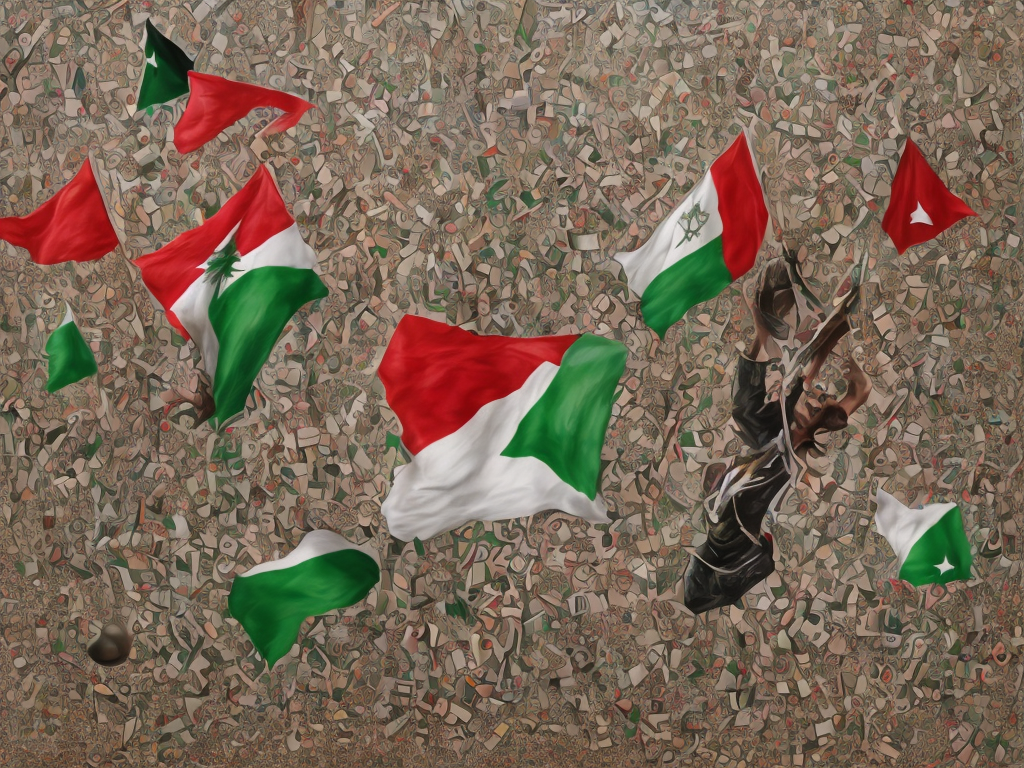
The conflict between Hamas and Palestine is a complex and multifaceted issue that has garnered significant attention from the international community. While the terms Hamas and Palestine are often used interchangeably, it is crucial to understand the difference between the two entities.
At its core, Palestine refers to the historical region located in the Eastern Mediterranean that encompasses modern-day Israel, the West Bank, and the Gaza Strip. It has a complex and rich history, marked by a diversity of ethnic and religious groups. The Palestinian people, predominantly Arab, have deep ties to the land and have sought self-determination for decades.
Hamas, on the other hand, is a specific political and military organization that emerged in the late 1980s. The group's origins can be traced back to the First Intifada, a Palestinian uprising against Israeli occupation that lasted from 1987 to 1993. Initially, Hamas began as an offshoot of the Muslim Brotherhood, a broader Islamic organization founded in Egypt in the 1920s.
Hamas's primary objective is the establishment of an Islamic state in all of historic Palestine, including what is now recognized as the State of Israel. The group rejects any negotiations or agreements that do not meet this objective and believes in armed resistance as a means to achieve its goals. As a result, Hamas has been designated as a terrorist organization by several countries, including the United States, Israel, and the European Union.
The Palestinian Authority (PA), on the other hand, is recognized as the governing body of the Palestinian people and has been granted some degree of autonomy in parts of the West Bank under the Oslo Accords. The PA, headed by President Mahmoud Abbas, operates institutions that provide basic services to the Palestinian population, such as education, healthcare, and security.
The relationship between Hamas and the PA is complex. Following Hamas's victory in the 2006 legislative elections, tensions escalated between the two factions. Hamas, in control of the Gaza Strip, sought to challenge the authority of the PA, leading to a violent split between the West Bank and Gaza. Since then, the Gaza Strip has been effectively ruled by Hamas, while the PA retains control of parts of the West Bank.
One critical distinction between Hamas and Palestine lies in their tactics and strategies. Hamas, as a militant group, has employed various methods to resist Israeli occupation. These include suicide bombings, rocket attacks, and guerrilla warfare. This approach has often been met with heavy Israeli military responses that have resulted in significant civilian casualties. Critics argue that Hamas's tactics not only endanger the lives of Palestinians but also undermine the broader Palestinian cause by providing Israel with the pretext for military operations and sieges.
In contrast, the Palestinian Authority, led by President Abbas, has pursued a diplomatic approach to resolve the Israeli-Palestinian conflict. They have engaged in peace negotiations with Israel and sought recognition of a Palestinian state through international means, such as the United Nations. However, these efforts have been met with limited success, as the Israeli government has been reluctant to make substantial concessions.
Furthermore, while Palestine, as a concept, encompasses all Palestinians, regardless of their political affiliations, Hamas's influence is primarily confined to the Gaza Strip. The West Bank, under the control of the PA, has seen a different political landscape and leadership. This distinction is crucial to understanding the diversity of political opinion within the Palestinian community.
It is essential to note that the conflict between Hamas and Israel is not synonymous with the conflict between Palestine and Israel. While Hamas is a prominent player in the Palestinian resistance, it does not represent the entire population nor fully encapsulate the aspirations, goals, and diversity of Palestinians.
The conflict between Hamas and Palestine is indicative of the numerous challenges that the Palestinian people face in their quest for self-determination. The broader issue of Israel-Palestine is rooted in historical land disputes, conflicting nationalist aspirations, and the deep scars of violence and loss. It is a conflict that has resulted in immense human suffering and has resisted resolution for decades.
To truly understand the difference between Hamas and Palestine, one must recognize the multi-layered nature of the conflict and the diverging strategies employed by various Palestinian factions. While Hamas represents a specific political and military organization, Palestine encompasses a broader narrative of resilience and struggle for self-determination. By acknowledging these nuances, the international community can foster more informed discussions and work towards a just and lasting resolution to the complex Israeli-Palestinian conflict.
 Self-Instruct
Self-Instruct